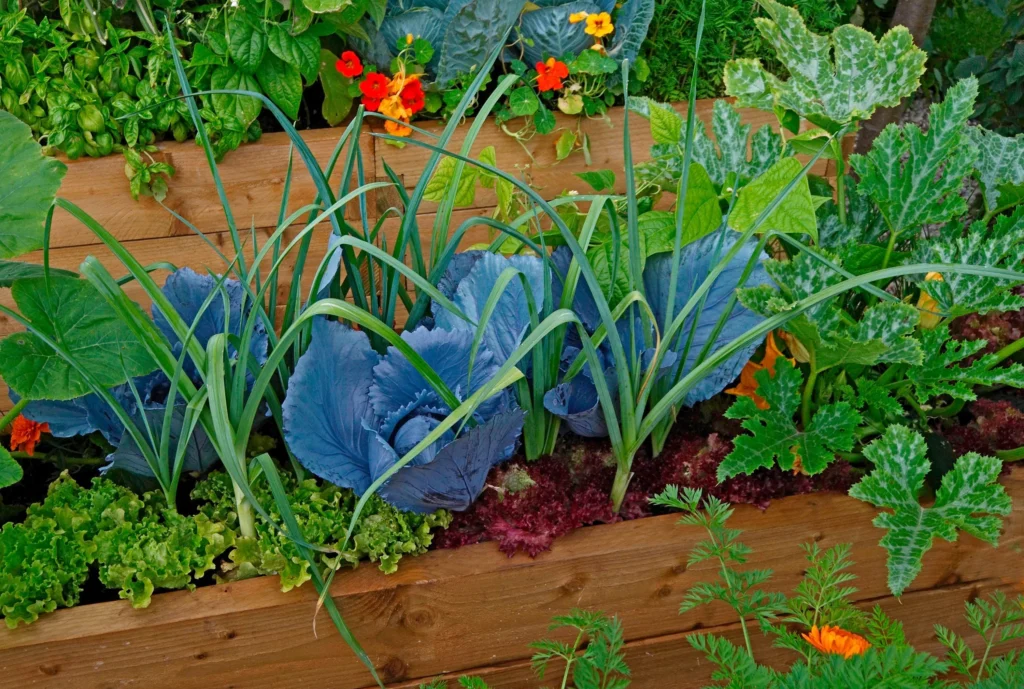

Have you ever tried companion planting in your garden? If not, you’re missing out on a wonderful way to create a thriving, healthy garden that works with nature to enhance your plants’ growth. By understanding companion planting, you can create a garden where different crops benefit each other, helping to reduce pests, disease, and weeds while also improving flavor, growth, and harvest.
In this guide, we’ll break down everything you need to know about companion planting, including how it works, the benefits it brings, and how you can apply it to your own vegetable garden!
Here’s a table summarizing the benefits of companion planting:
| Benefit | Description |
|---|---|
| Improved Flavor | Companion planting can enhance the flavor of certain crops by providing natural support and nutrients to the plants. |
| Increased Growth | Certain plants can boost each other’s growth by improving soil quality or attracting beneficial insects that promote healthy plant development. |
| Better Yields | Plants that work well together can produce higher yields by sharing resources, such as water, nutrients, and light, more efficiently. |
| Fewer Pests and Diseases | By choosing the right companions, you can naturally deter pests and reduce the occurrence of diseases, minimizing the need for pesticides and chemical treatments. |
This table outlines how companion planting helps create a more productive, sustainable garden by benefiting plant growth, flavor, and health.
How Does Companion Planting Work?

Companion planting works in a variety of ways, including:
1. Attracting Beneficial Insects

Some plants attract insects that are beneficial to your garden, like predatory insects and parasitic wasps, which feed on harmful pests such as aphids, squash bugs, and hornworms. Companion plants also attract pollinators like bees, which are crucial for many crops.
Tip: Consider planting marigolds and dandelions, which attract pollinators and beneficial insects to your garden.
2. Improving Soil Quality

Some plants can naturally add nutrients back into the soil. For example, legumes like beans and peas are nitrogen-fixing plants, meaning they add nitrogen to the soil, which helps plants that need more nitrogen, like corn and tomatoes.
Root vegetables, like carrots and radishes, can help break up the soil, while deep-rooted plants pull nutrients up from deep within the soil, benefiting shallow-rooted crops like lettuce.
3. Trap Cropping for Pest Control
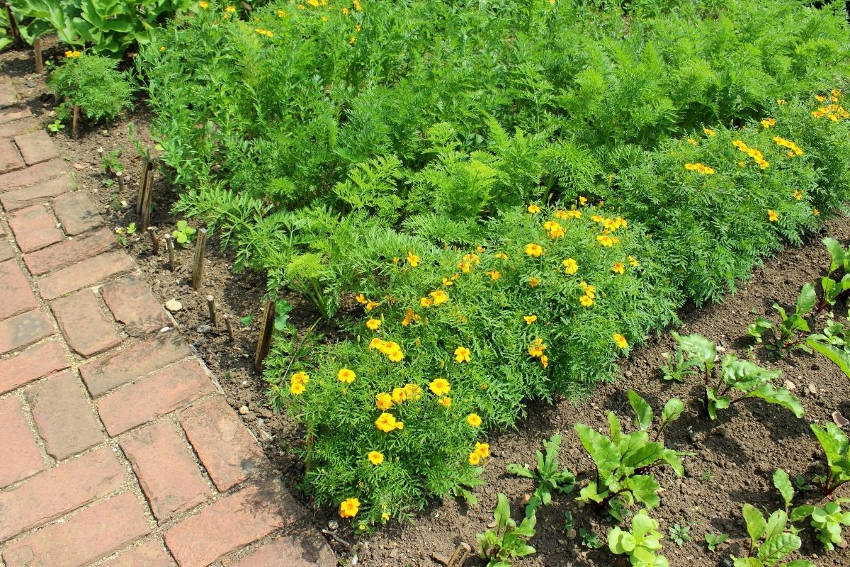
One way to control pests is by planting trap crops. These are plants that attract pests away from your valuable crops. By planting trap crops, such as nasturtiums or mustard greens, near your vegetables, you draw pests like aphids and caterpillars to them instead of your main crops.
Tip: Regularly remove and dispose of the most pest-infested parts of your trap crops to keep pests under control.
4. Repelling or Detering Pests
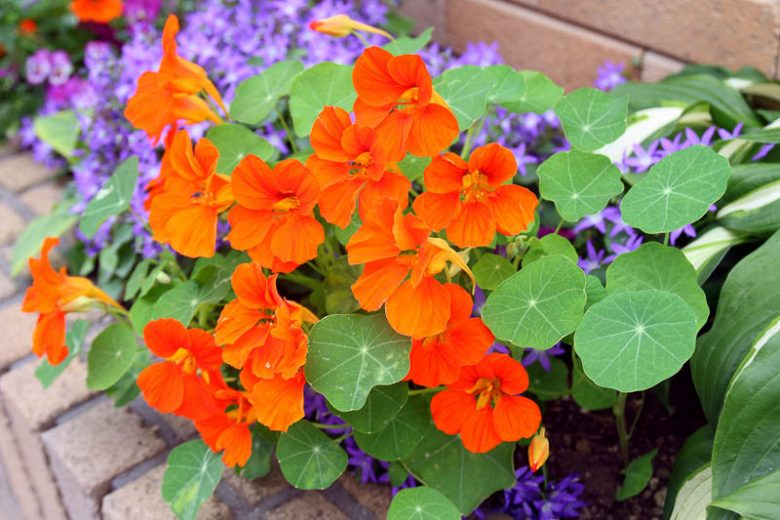
Certain plants have strong scents or qualities that confuse or repel pests. For instance, garlic and onions are great at deterring pests like aphids and carrot flies because their smell interferes with the pests’ ability to find your crops.
Plants like basil and mint can help mask the scent of your main crops, making it harder for pests to locate them. Some plants even cause physical reactions in pests, such as paralysis, making them easier prey for predatory insects.
5. Maximizing Space and Efficiency
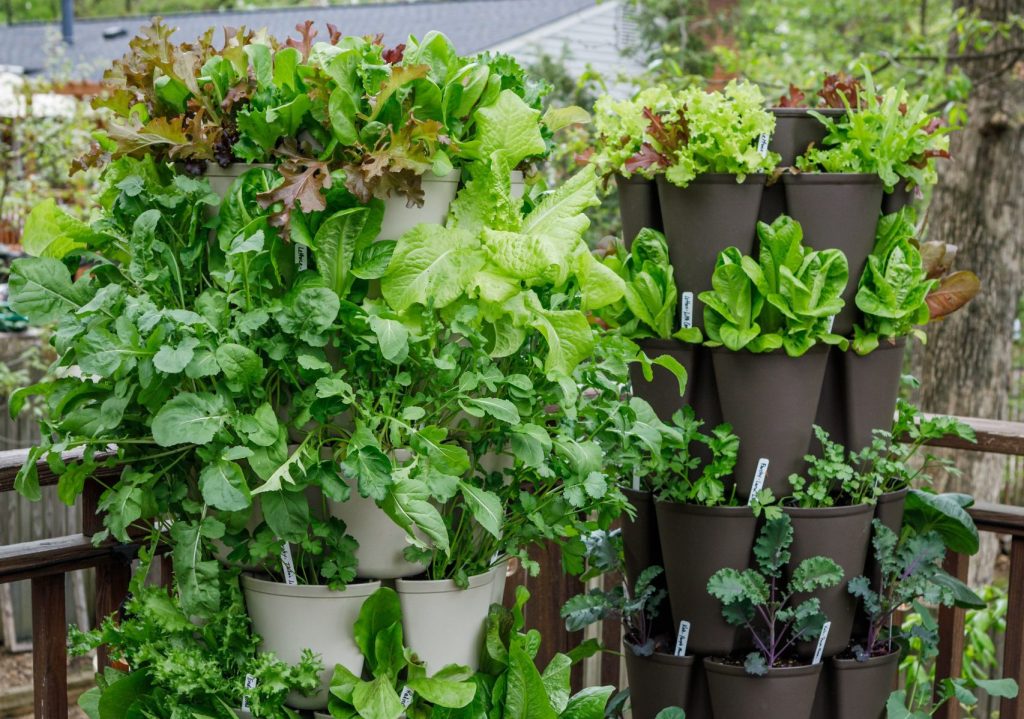
Companion planting can save space and time in your garden. Some plants complement each other by occupying different layers of space, which means you can plant them closer together without competing for nutrients. For example, lettuce and spinach can be planted under tomatoes or peppers, allowing you to make better use of your garden space.
Tip: Pair crops with similar care needs (light, water, and soil requirements) to streamline your gardening tasks. Peppers and tomatoes, for example, can be grown together as they share similar requirements.
Good Companions or Bad Companions?

The key to successful companion planting is knowing which plants get along and which ones don’t. For example, tomatoes grow well with basil and carrots, but they shouldn’t be planted near potatoes, as they can attract similar pests.
If you’re unsure about which plants make good companions, download my Companion Planting Chart for a quick reference guide to companion plants.
In-Depth Companion Planting Guides
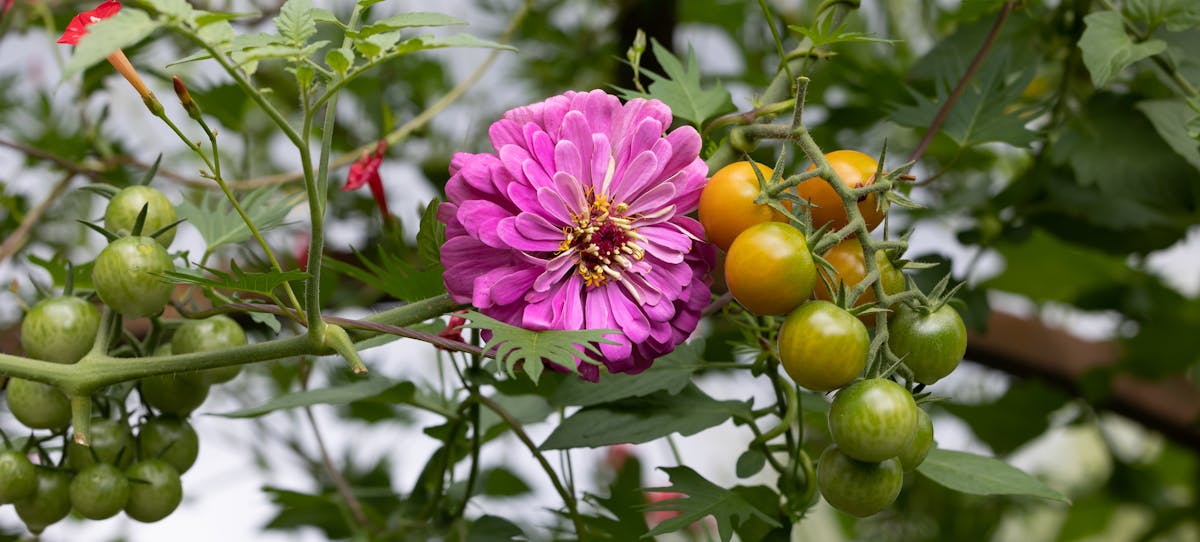
Now that you understand the basics of companion planting, here’s a deeper dive into how to pair specific plants for better growth and pest control:
- Tomato Companion Plants: Tomatoes thrive alongside basil, marigolds, and carrots. These companions help improve flavor, deter pests, and enhance growth.
- Cucumber Companion Plants: Plant cucumbers with radishes, nasturtiums, and beans to deter pests like aphids and squash beetles.
- Pepper Companion Plants: Peppers benefit from being planted next to basil, onions, and spinach. These plants help deter pests and increase flavor.
- Corn Companion Plants: The famous “Three Sisters Garden” method uses corn, beans, and squash together to benefit one another. Beans help fix nitrogen for corn, while squash provides ground cover to suppress weeds.
- Garlic Companion Plants: Garlic works well with tomatoes, carrots, and cabbage. Its strong scent helps repel pests like aphids and root maggots.
- Squash Companion Plants: Nasturtiums and radishes make great companions for squash, as they repel squash bugs and help improve the soil.
- Cabbage Companion Plants: Thyme, dill, and onions are great companions for cabbage, helping to repel pests like cabbage worms.
- Eggplant Companion Plants: Beans, marigolds, and peppers help eggplant thrive by improving soil health and deterring pests like aphids.
Companion Planting FAQ
How do I know which plants should not be planted together?
Some plants compete for nutrients, while others may attract the same pests. For example, tomatoes and potatoes should not be planted together because they are both susceptible to the same diseases, like blight.
Can companion planting eliminate the need for pesticides?
While companion planting can help reduce pests, it may not eliminate them entirely. It’s a natural way to control pests, but for major infestations, you may need to use organic pest control methods.
How do I know if companion planting is working?
Look for healthy plants, improved yields, and reduced pest problems. If you notice fewer pests and more vibrant, strong crops, that’s a good sign your companion planting is working!
Conclusion
Companion planting is an easy, natural, and effective way to improve the health and productivity of your garden. By choosing the right plant companions, you can reduce pests and disease, increase your harvest, and even improve the flavor of your crops. Start small by trying a few companion planting techniques in your garden, and soon you’ll see the many benefits of this age-old gardening method. Happy planting!
